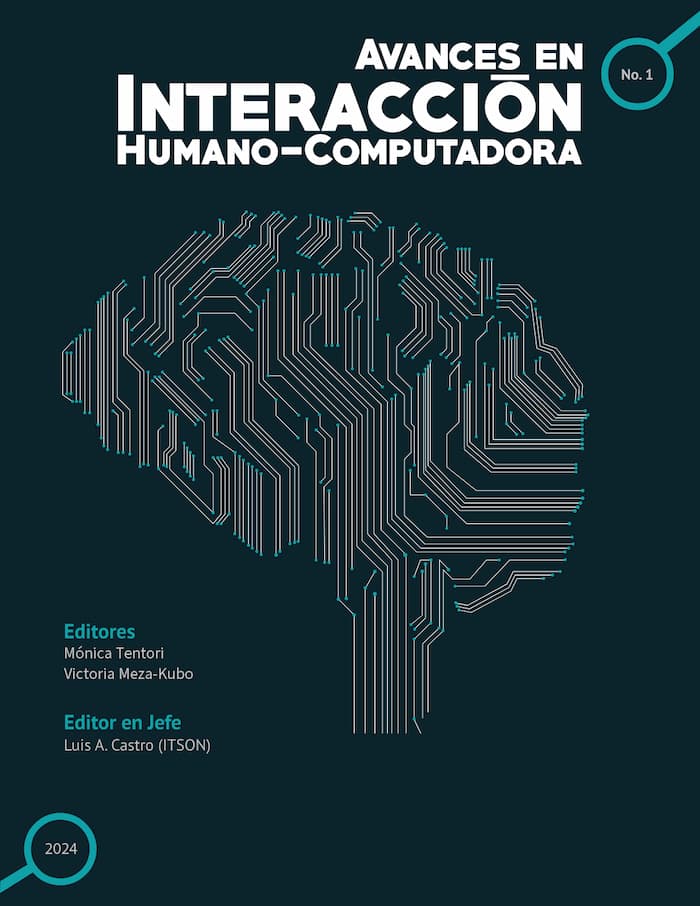Effective Pitch Decks through User-Centered Prompts for Generative AI
DOI:
https://doi.org/10.47756/aihc.y9i1.176Keywords:
Generative Artificial Intelligence, User Centered Design, Pitch Deck, Prompt Engineering, Generative MarketingAbstract
This study investigates the application of generative marketing as an emerging strategy for startups, with a particular focus on generating Pitch Decks through the design of Artificial Intelligence (AI) prompts using a User-Centered Design approach. To date, in this ongoing research, we have adapted the User-Centered Design methodology to craft prompts that enable entrepreneurs to interact with Large Language Models to create effective and persuasive presentations tailored to the specific needs of early-stage tech startups. Our goal is to develop accessible and low-cost methodologies to facilitate the use of large language models through publicly available AI systems. These methodologies will be designed to assist startups in securing funding and positioning themselves in a highly competitive business environment.
Downloads
References
Martínez-Ortega, A. G., Medina-Chicaiza, R. P., (2020). Tecnologías en la inteligencia artificial para el Marketing: una revisión de la literatura. Pro Sciences, Vol. 4, No. 30, PP. 36-47 DOI: https://doi.org/10.29018/issn.2588-1000vol4iss30.2020pp36-47
doi.org/10.29018/issn.2588-1000vol4iss30.2020pp36-47
Sabaj, O., Cabezas, P., Varas, G., González-Vergara, C., & Pina-Stranger, Á. (2020). Empirical Literature on the Business Pitch: Classes, Critiques, and Future Trends. Journal of Technology Management & Innovation, 15(1), 55-63. DOI: https://doi.org/10.4067/S0718-27242020000100055
doi.org/10.4067/S0718-27242020000100055
Verma, S., Sharma, R., Deb, S., Maitra, D., (2021). Inteligencia artificial en marketing: revisión sistemática y dirección futura de la investigación. International Journal of Information Management Data Insights doi.org/10.1016/j.jjimei.2020.100002.
Gutiérrez, K. (2023). Generative Artificial Intelligence: Disruption and Challenges. Revista Enfoques, 4(2), 57-, https://revistasdigitales.uniboyaca.edu.co/index.php/EFQ/article/view/1075/838
Chintalapati, S. y Pandey, S. K. (2022). Inteligencia artificial en marketing: una revisión sistemática de la literatura. Revista Internacional de Investigación de Mercado, 64 (1), 38-68.
doi.org/10.1177/14707853211018428
Arroyo Fernández, Ignacio. (2024). A Very Simple Introduction to Large Language Models. https://www.youtube.com/watch?v=86N-vjS4y78&t=5220s
Shimasaki, C. (2020). Chapter 23 - Investor Presentations: What Do You Need in an Investor Pitch Deck? In Biotechnology Entrepreneurship (Second Edition). Academic Press, Pages 325-336
https://doi.org/10.1016/B978-0-12-815585-1.00023-1 DOI: https://doi.org/10.1016/B978-0-12-815585-1.00023-1
Doria, M. V., Korzeniewski, M. I., Flores, C. V., & Del Prado, A. M. (2023). Herramientas y tips para generar prompts con Inteligencia Artificial.
Arroyo-Fernández, I., Méndez-Cruz, C.F., Sierra, G., Torres-Moreno, J.M., Sidorov, G. (2019). Unsupervised sentence representations as word information series: Revisiting TF–IDF, Computer Speech & Language, Pages 107-129 https://doi.org/10.1016/j.csl.2019.01.005. DOI: https://doi.org/10.1016/j.csl.2019.01.005
REAL ACADEMIA ESPAÑOLA: Diccionario de la lengua española, 23.ª ed., [versión 23.7 en línea] <https://dle.rae.es>
[Consultado por última vez 27-07-2024]
Piskorski,J., Stefanovitch,N., Bausier, V-A., Faggiani,N., Linge, J., Kharazi, S., Nikolaidis, N., Teodori, G., De Longueville, B., Doherty, B., Gonin, J., Ignat, C., Kotseva, B., Mantica, E., Marcaletti, L., Rossi, E., Spadaro, A., Verile, M., Da San Martino, G., Alam, F., Nakov, P. 2023. News Categorization, Framing and Persuasion Techniques: Annotation Guidelines, European Commission, Ispra, 2023 https://knowledge4policy.ec.europa.eu/sites/default/files/JRC132862_technical_report_annotation_guidelines_final_with_affiliations_1.pdf
Chintalapati, S. y Pandey, S. K. (2022). Inteligencia artificial en marketing: una revisión sistemática de la literatura. Revista Internacional de Investigación de Mercado, 64 (1), 38-68. doi.org/10.1177/14707853211018428
Zúñiga Vásquez, F. G., Mora Poveda, D. A. y Molina Mora, D. P. (2023). La importancia de la inteligencia artificial en las comunicaciones en los procesos de marketing. Vivat Academia, 156, 19-39. DOI: https://doi.org/10.15178/va.2023.156.e1474
doi.org/10.15178/va.2023.e1474
Breum, S. M., Egdal, D. V., Gram Mortensen, V., Møller, A. G., & Aiello, L. M. (2024). The Persuasive Power of Large Language Models. Proceedings of the International AAAI Conference on Web and Social Media, 18(1), 152-163. https://doi.org/10.1609/icwsm.v18i1.31304 DOI: https://doi.org/10.1609/icwsm.v18i1.31304
Bordia, S. (2023). Using Large Language Models to Assist Content Generation in Persuasive Speaking. Intersect: The Stanford Journal of Science, Technology, and Society https://ojs.stanford.edu/ojs/index.php/intersect/article/view/2399/1558
Lallee, A., & Muco, N. (2023). Hello! How Can I Assist You Today?: An Analysis of GPT Technology in Supporting International Entrepreneurship (Dissertation). https://urn.kb.se/resolve?urn=urn:nbn:se:lnu:diva-125787
Ilagan, J. B. R., & Ilagan, J. R. (2023). A Prototype of a Chatbot for Evaluating and Refining Student Startup Ideas Using a Large Language Model. DOI: https://doi.org/10.35542/osf.io/azhf9
Short,C. E., & Short, J. C. (2023). The Artificially Intelligent Entrepreneur: ChatGPT, Prompt Engineering, and Entrepreneurial Rhetoric Creation. Journal of Business Venturing Insights, 19, e00388. https://www.sciencedirect.com/science/article/abs/pii/S2352673423000173 DOI: https://doi.org/10.1016/j.jbvi.2023.e00388
Puapongsakorn, P., & Brazdeikyte, E. (2023). Exploring the Integration of Artificial Intelligence in the Ideation Stage of Product Development in Swedish Startups: Challenges, Opportunities, and Tool Utilization.
Kaminski, J. C., & Hopp, C. (2020). Predicting Outcomes in Crowdfunding Campaigns with Textual, Visual, and Linguistic Signals. Small Business Economics, 55, 627–649. https://propaganda.math.unipd.it/semeval2024task4/ DOI: https://doi.org/10.1007/s11187-019-00218-w
Interaction Design Foundation - IxDF. (2016). What is User Centered Design (UCD)?. Interaction Design Foundation - IxDF.
https://www.interaction-design.org/literature/topics/user-centered-design [Consultado por última vez en 05-08-2024]
Mao, J. Y., Vredenburg, K., Smith, P. W., & Carey, T. (2005). The State of User-Centered Design Practice. Communications of the ACM, 48(3), 105-109. https://doi.org/10.1145/1047671.1047677 DOI: https://doi.org/10.1145/1047671.1047677
Wang, X., Attal, M. I., Rafiq, U., Hubner-Benz, S. (2024). Turning Large Language Models into AI Assistants for Startups Through Prompt Patterns. In: Kruchten, P., Gregory, P. (Eds) Agile Processes in Software Engineering and Extreme Programming
https://doi.org/10.1007/978-3-031-48550-3_19 DOI: https://doi.org/10.1007/978-3-031-48550-3_19
Downloads
Published
How to Cite
Issue
Section
License

This work is licensed under a Creative Commons Attribution-NonCommercial-NoDerivatives 4.0 International License.
AMexIHC make every effort to ensure the accuracy and rigour of all the information (the "Content") contained in out publications. However, AMexIHC and our representatives make no representations or warranties whatsoever as to the accuracy, completeness, or suitability for any purpose of the Content. Any opinions and views expressed in this publication are the opinions and views of the authors, and are not the views of or endorsed by AMexIHC. The accuracy of the Content should not be relied upon and should be independently verified with primary sources of information.


